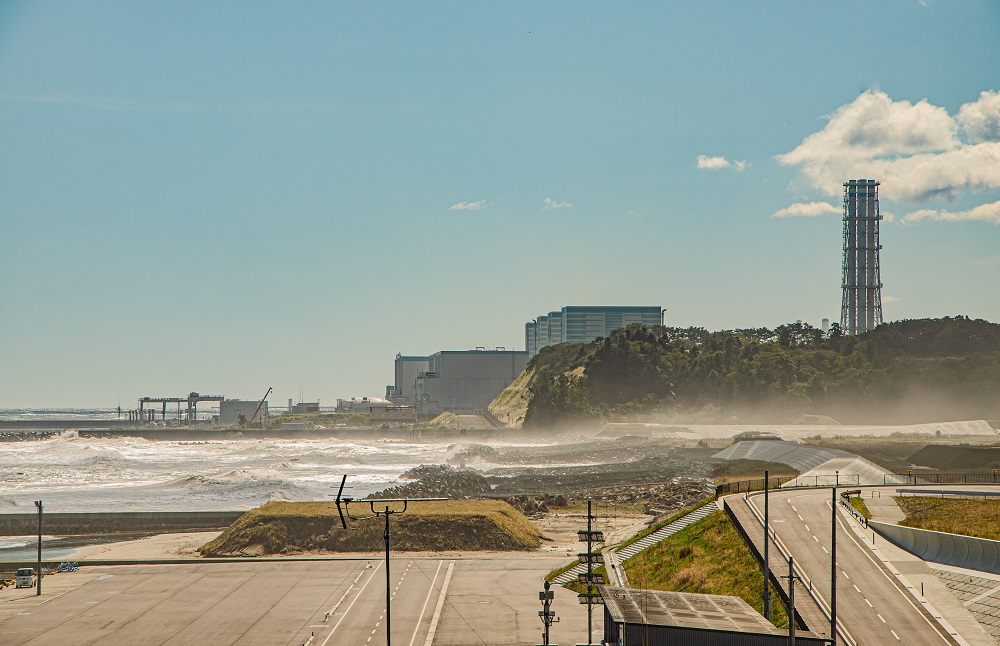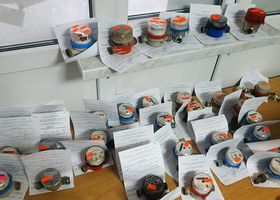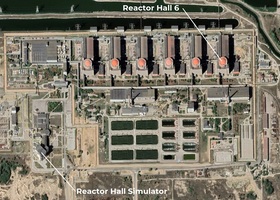Anniversary of the Fukushima Plant Accident: What Lessons for Ukraine?
Greenpeace believe that the Japanese government's biggest mistakes in the first days after the disaster were the inadequate organization of hazard warnings and problems with evacuating the population

The accident at the Fukushima nuclear power plant was a challenge not only for Japan but for the entire planet. The consequences of this disaster are still being felt today. It is a reminder of the importance of ensuring nuclear safety in the world.
In 2022, for the first time in history, humanity faced a situation when a nuclear facility of one country was occupied by another state. We are talking about Zaporizhzhya NPP, which was seized by the Russians. During the two years of occupation, Russia has repeatedly brought the situation at the plant to a critical point, thus bringing both Ukraine and the entire continent to the brink of disaster.
What are the ongoing threats to ZNPP? How can the experience of the Fukushima accident response be useful to Ukraine in the event of an emergency? These issues were discussed at a webinar organized by the Kyiv School of Energy Policy. The speakers at the event were Greenpeace experts Shaun Burnie and Jan Vande Putte.
The Fukushima nuclear disaster: a timeline of events
On 11 March 2011, one of the world's largest nuclear disasters occurred in Japan. The accident at the Fukushima Nuclear Power Plant was caused by an extremely powerful earthquake that triggered a tsunami. With waves reaching over 10 meters, the nuclear plant had virtually no chance of survival.
According to experts from the international non-governmental environmental organization Greenpeace, after the accident at the Fukushima nuclear power plant, most of the hazardous substances ended up in the world's oceans: 80% was washed away by water, while the remaining 20% settled on land.
In the first days after the accident, residents were exposed to hazardous elements. The Japanese government decided to create a special zone around the nuclear power plant, from which the entire population had to leave. It was a 30-kilometer radius. Hundreds of thousands of people were forced to leave their homes.
Damage to the reactors is still a significant problem. Unlike Chornobyl, there are no sarcophagi there
"This area was most affected by the disaster. Of course, some of the radiation even reached Tokyo. But it was this zone that was most affected by radiation. People were poisoned with radioactive substances not only from the soil but also from the air. Damage to the reactors remains a significant problem. Unlike Chornobyl, there are no sarcophagi there. Water was needed to cool the core, so a lot of contaminated liquid was produced." - said Jan Vande Putte, nuclear energy specialist at Greenpeace.
Greenpeace experts were at the site of the disaster - they arrived there a few days after the accident. According to them, they immediately started researching: they conducted examinations of ocean water and, just as importantly, food to understand the level of contamination in the food. In particular, fish and vegetables were examined.
Cesium-137 will remain in the ecosystem for a very long time. Its half-life is 30 years. It is believed to have 10 half-lives. So, in total, it's 300 years
Meanwhile, the evacuation of the locals continued. For example, about 4,600 people had to be evacuated from the small village of Iitate alone. And it was not possible to do this immediately after the accident. According to Greenpeace experts, there was a certain delay in this process. The Fukushima accident caused significant environmental contamination.
"For example, Cesium-137 will remain in the ecosystem for a very long time. Its half-life is 30 years. It is believed to have 10 half-lives. So, in total, it is 300 years. Thus, the soil will be contaminated for hundreds of years. Initially, the situation in Fukushima was similar to what happened in Chornobyl. The reaction of the trees - pine trees in Japan showed certain morphological changes, and this was due to the impact of radiation." - said Shaun Burnie, Senior Nuclear Specialist at Greenpeace Germany.
13 years after the disaster: the danger remains
Greenpeace experts have been monitoring the situation about radiation contamination in Japan. For example, one of their studies was conducted over 30 months: from April 2011 to August 2013. They noticed that the overall level of contamination did decrease over time. However, the indicators of individual elements did not have a single trend: they either decreased or increased. This indicates the possibility of re-infection, as the source of the toxic substances is still not isolated, environmentalists say.
Another important task was to decontaminate the area. The Japanese government started this process almost in the first days after the accident. The work was enormous. For example, thousands of workers collected and stored contaminated soil. We are talking about a volume of about 13 million tonnes. This soil was taken to special storage sites.
Thousands of workers collected and stored contaminated soil. We are talking about a volume of about 13 million tonnes
"Another work that is very close to us was carried out on one of the farms. A family was engaged in agriculture there. They had a farm that was located further away from Fukushima. The farmers asked us if they could farm there in the future. And we said yes. They did not need to move, they did not have children. We advised them to stay. It is very important to tell people not only where the dangerous areas are, but also where they can stay. But also where they can stay." - said Jan Vande Putte, nuclear energy specialist at Greenpeace.
Millions of tonnes of radioactive water is another challenge for Japan. From time to time, the Japanese government announces the release of a certain amount of liquid into the ocean. One of the latest such notifications is dated November 2023. A special kilometer-long tunnel was used to discharge 460 tonnes of water every day. Back in 2021, Japan approved a special plan to release water into the ocean. Before that, the liquid was cleaned and diluted to reduce radiation levels to normal. Japan received a lot of criticism for the decision to release such water into the ocean from both neighboring countries and international organizations. However, the government in Tokyo argued that this process was justified and safe. The IAEA supported the decision.
In November 2023, 460 tonnes of water were discharged daily through a special kilometer-long tunnel
"The latest sampling and analysis of the seawater near the plant showed that the tritium content is below the maximum permissible level in Japan. Our impartial monitoring will continue for the duration of the water discharge, which is expected to take decades. As I have said before, the IAEA has been there before and will be there upon the completion of the activity." - said IAEA Director General Rafael Grossi.
The damage caused by the Fukushima nuclear disaster has reached a colossal amount. The estimated amount is approximately $449-628 billion
The total damage caused by the Fukushima nuclear disaster has reached a colossal amount. The estimated amount is approximately $449-628 billion, according to Greenpeace. However, it is too hasty a conclusion to assume that the consequences of the Fukushima accident have been resolved.
"People cannot enter the reactor and collect the wreckage. Not a single gram of nuclear fuel has been removed. Therefore, the question remains: how will it be done? The important information that we have found is that the foundation of the nuclear power plant is damaged - some of the supports have melted. This concerns one of the reactors. What is worrying is that if there are more earthquakes, and they are commonplace in Japan, there is a possibility that this structure could collapse." - suggests Shaun Burnie, senior nuclear specialist at Greenpeace Germany.
Zaporizhzhya NPP: Russians must leave
Greenpeace experts are alarmed by the situation at the Russian-occupied Zaporizhzhia Nuclear Power Plant. They emphasized that the best way to secure the plant is to withdraw Russian troops and Rosatom employees from Ukraine. The organization emphasizes that it should not be ruled out that the Russians could deliberately provoke an accident at the Zaporizhzhya nuclear power plant. And it would not necessarily be a disaster on the scale of Chornobyl or Fukushima, but something much less severe. The Russians could provoke, in particular, in the event of unfavorable developments on the front line - for example, a successful Ukrainian counter-offensive.
"The role of the government in working with the population is extremely important if something happens at Zaporizhzhya NPP or another plant. The population should follow the government's advice. But the situation is very uncertain. There is not always data on contamination or radiation background at the plant itself. Unfortunately, the Russians are acting at their discretion and we cannot be sure of the IAEA's actions.” - said Shaun Berney, Senior Nuclear Specialist at Greenpeace Germany.
As of 28 February 2024, the 330 kV line feeding ZNPP is still de-energized
It is worth noting that the IAEA mission is permanently present at Zaporizhzhya NPP. At the same time, foreign observers are always accompanied by representatives of Rosatom and the Russian military or special services. The mission reports data on the radiation background at the plant, as well as on threats to the plant. Last week, IAEA experts recorded powerful explosions near the plant. Earlier, observers reported that the area had been mined, and indicated that the Russians were behind it.
"I remain deeply concerned about the nuclear safety situation at the largest nuclear power plant in Europe, located on the frontline in Ukraine. Our experts' reports indicate possible hostilities near the plant. I reiterate my call on all parties to strictly adhere to the five specific principles of nuclear power plant protection and to avoid any attacks or military activities that could threaten nuclear safety and security." - said IAEA Director General Rafael Grossi.
The Russians have recently brought the situation at the plant to a critical point again. Due to shelling on 20 February, ZNPP was left on one power line. The occupiers did not allow the wires to be repaired. According to the Ministry of Energy, as of 28 February 2024, the 330 kV line supplying ZNPP is still de-energised.
"If not for the constant shelling by the Russians, we would have done it faster. We waited a long time for the enemy to stop firing artillery. And after receiving permission from the military to leave, we had to clear the way for the equipment through the damaged landing, and only then start repairing it. All of this was constantly interrupted by enemy fire.” - Ukrenergo's press service said.
The shelf life of fuel used in ZNPP
reactors will expire soon
Energoatom reported another threat to the plant. The shelf life of the fuel used in ZNPP reactors will expire soon. Whether and how to replace it is still up in the air. In addition, since 1 February, the occupiers have stopped letting in those Ukrainian employees who refused to take Russian passports.
"ZNPP was illegally occupied by the Russian army. Ukrainian employees are under enormous stress. Some of them have left, and there are reports of torture and murder. Some employees are now Rosatom employees who are not qualified to work at ZNPP. The international community is rather naive about how brutal the Russian army can be. We need to understand that they are ready for anything, especially if they feel pressure at the front." - said Jan Vande Putte, nuclear energy specialist at Greenpeace.
Fukushima experience: advice for Ukraine
The Japanese experience can be useful for Ukraine in the event of a potential emergency or accident at the ZNPP, Greenpeace experts believe. They emphasize that it is especially important to analyze the first steps taken by Japanese experts after the disaster. Most of their actions were indeed correct. However, there were also mistakes, and they should also be focused on. Greenpeace identifies two of the biggest mistakes: the inadequate organization of evacuations from the area of greatest contamination, and problems with measuring radiation contamination in the first days after the accident.
"When it comes to evacuation - who needs to move and who does not - it is very important to trust the government's recommendations. Approximately 700 people died during the evacuation from Fukushima. There will be elderly people, people with limited mobility, and hospital patients who will have to travel by bus for hours. These are very difficult decisions. A year after the accident, the Japanese parliament assessed the situation and noted that the government had made many mistakes. One of them was that in the first days of the accident, the system for measuring the radiation background did not work (partly due to a power outage). As a result, in the first days people were evacuated in the areas of the highest contamination." - said Jan Vande Putte, nuclear energy specialist at Greenpeace.
Among the biggest failings of the Japanese government, Greenpeace highlights the inadequate organization of evacuation, as well as problems with measuring radiation contamination
In the event of an emergency, experts' advice to the population of Ukraine is as simple as possible: take shelter indoors, close all exits, and wait for messages from the authorities. However, will residents of the occupied territories have access to this information? This is another serious challenge for Ukraine and the entire democratic world. No country has ever faced the problem of occupation of a nuclear power plant and the city where it is located. Next week, on the second anniversary of the seizure of the Zaporizhzhya NPP, Greenpeace promised to publish detailed recommendations on how Ukraine should act in the event of a nuclear hazard or accident.
Serhiy Barbu, especially for Ukrainian Energy








